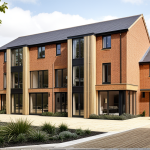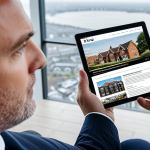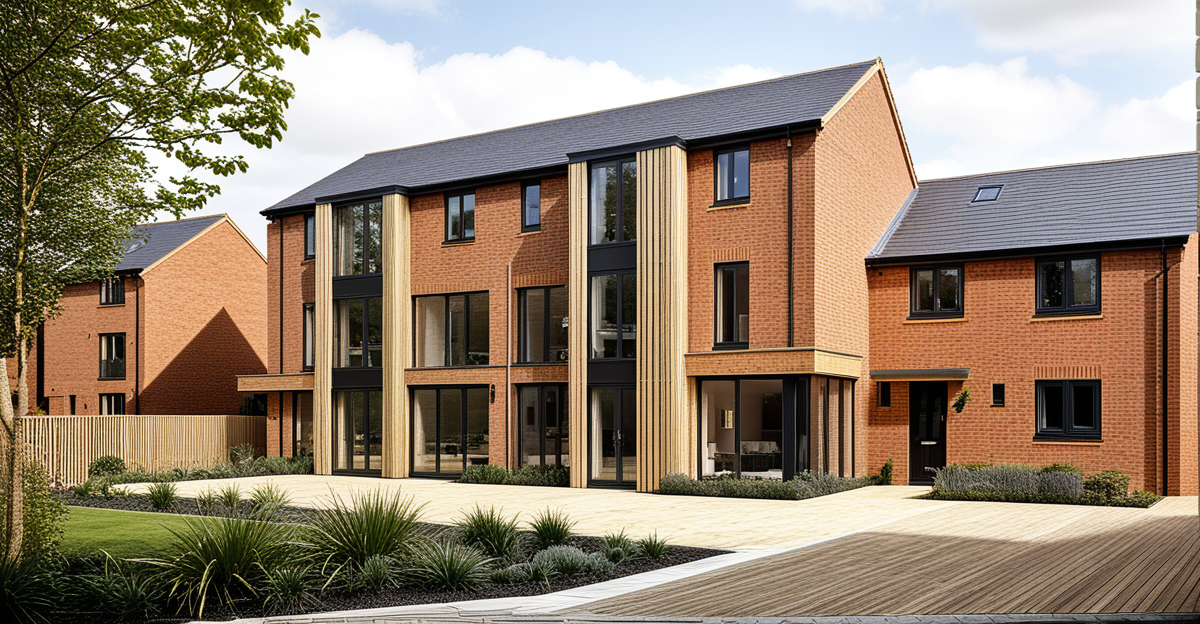Architects’ Impact on Property Value in the UK Real Estate Market
Architects play a pivotal role in increasing property value through innovative and thoughtful design. Their creative input directly influences not only the aesthetic appeal but also the functional utility of a development, which elevates marketability and can command higher sales or rental prices. For example, a well-designed facade or interior layout crafted by skilled architects can distinguish a property within the competitive UK real estate market, attracting discerning buyers willing to pay a premium.
Moreover, architectural quality enhances a property’s reputation and longevity. This influence extends beyond superficial beauty to incorporate durable materials and efficient spatial planning, which can boost the overall financial success of real estate ventures. Developments led by architects often see measurable uplifts in value, sometimes exceeding standard market appreciation rates.
Additional reading : How Can Emerging Technologies Reshape the UK’s Real Estate Finance Sector?
In the UK, where property value is keenly tied to design trends and locality status, the involvement of architects is an asset. Their expertise ensures properties achieve optimal positioning, making them attractive assets for both immediate sale and sustained rental income. This strategic design input is fundamental to maximizing returns in a dynamic housing market.
Maximising Returns Through Design and Site Planning
Enhancing value with strategic architectural decisions
In the same genre : What Key Factors Should Investors Consider in the UK Real Estate Market?
Achieving a strong return on investment in real estate development hinges critically on design optimisation and site planning. Architects bring expertise in analysing a site’s characteristics—such as topography, sun exposure, and access—to maximise usable space and functionality. This thoughtful approach ensures developments are tailored to local conditions, increasing their appeal and market value in the UK real estate sector.
Beyond spatial considerations, integrating sustainable and future-proof design elements further boosts returns. For example, energy-efficient systems and adaptable layouts lower operating costs and attract environmentally conscious buyers, enhancing long-term financial success. These features are increasingly valued in the UK market, reflecting growing demand for eco-friendly properties.
Real-world UK projects demonstrate how smart design and site planning drive superior financial performance. Developments that capitalise on natural light, optimise land use, and incorporate green technologies often outperform competitors, translating into higher sales and rental prices. In these ways, architects’ strategic decisions directly contribute to improved return on investment and bolster a project’s success in a competitive landscape.
Cost-Effective Project Delivery and Lifecycle Management
Efficient architecture for sustainable financial outcomes
Effective cost management led by architects is central to delivering projects within budget without compromising quality. Architects apply value engineering, balancing design ambitions with practical cost controls to optimise expenditure while maintaining essential features. This approach reduces unnecessary spending early on, preventing costly changes during construction.
Lifecycle planning is another critical element where architects influence the financial success of a project. By considering long-term operational costs, such as energy use, maintenance, and adaptability, architects design buildings that minimise expenses over their lifespan. This foresight supports cost-effective lifecycle management, resulting in significant savings for developers and investors.
Additionally, architects contribute to risk mitigation by identifying potential construction challenges and regulatory hurdles before project commencement. The integration of efficient project delivery processes ensures timelines and budgets are met, reducing the chance of financial overruns. Examples from UK real estate developments reveal how these architectural strategies improve overall efficiency, safeguarding returns and enhancing stakeholder confidence. These efforts underscore the role of architects as essential guardians of both project quality and economic prudence.
Achieving Compliance and Mitigating Risk in UK Regulation
Navigating UK building regulations is crucial for ensuring successful project outcomes. Architects leverage their expertise to streamline compliance with these often complex standards. By thoroughly understanding local codes and requirements, architects help avoid costly delays and legal complications that could otherwise jeopardise project timelines and budgets.
How do architects reduce project risks? They conduct detailed regulatory reviews early in the design phase, identifying potential planning permission hurdles. This proactive approach enables swift adjustments, aligning designs with current laws and reducing the likelihood of rejections or appeals.
Furthermore, ensuring design compliance protects financial interests by preventing penalties and costly redesigns. Architects also anticipate changes in regulations, incorporating flexibility to accommodate future amendments without extensive modifications.
In UK real estate, risk mitigation through regulatory expertise supports reliable project delivery and strengthens investor confidence. This process not only saves costs but also aids in meeting deadlines crucial for securing returns. Architects acting as regulatory navigators play an indispensable role in safeguarding both the project’s financial success and reputation. Their knowledge bridges the gap between creative ambitions and statutory obligations, maintaining smooth progress from planning to completion.
Collaboration for Stakeholder and Investor Success
Cultivating partnerships that drive financial outcomes
Effective stakeholder collaboration is crucial in real estate development, ensuring all parties—from investors to contractors—align towards shared financial goals. Architects serve as key facilitators in this process, balancing diverse interests to achieve optimal project outcomes. By engaging early with investors, architects clarify the design vision and financial expectations, which helps prevent costly misunderstandings later.
How do architects mediate between stakeholders? They translate technical design aspects into clear language, fostering transparent communication. This role is especially vital in complex UK real estate projects involving multidisciplinary teams, where alignment on budgets, timelines, and regulatory requirements matters profoundly.
Strong collaboration also supports proactive risk management, reducing delays and costly revisions that could undermine financial success. Architects coordinate input from planners, engineers, and investors, synthesising perspectives to maintain project momentum and maximise returns.
Examples from UK developments show that projects with architect-led collaboration often secure investor confidence faster and enhance overall value. These partnerships leverage architectural expertise not only in design but also in strategic communication, underscoring the role of architects as pivotal connectors driving both creative and financial success.
Innovation and Future-Proofing for Competitive Advantage
In the UK real estate market, innovation and future-proof architecture represent critical levers for securing a competitive edge. Architects leverage technologies like Building Information Modeling (BIM) and modular design to enhance precision, reduce construction times, and lower costs. These innovations contribute directly to a project’s financial success by improving efficiency and minimizing errors.
How does future-proof design enhance value? By creating adaptable and sustainable buildings, architects ensure properties remain relevant amid shifting market demands and evolving regulatory standards. Features such as flexible layouts, energy-efficient systems, and resilience to climate impacts attract buyers and tenants who prioritise sustainability, elevating property value over time.
UK developments incorporating future-ready design exhibit greater long-term financial stability. For example, buildings designed with modular components can be swiftly reconfigured or expanded, accommodating changing uses without major renovations. This flexibility mitigates risks related to obsolescence and supports sustained returns.
Ultimately, architect influence in weaving innovation and sustainability into real estate projects strengthens market positioning. Forward-thinking design not only appeals to eco-conscious stakeholders but also fosters ongoing financial success by aligning with emerging trends in the competitive UK property landscape.









